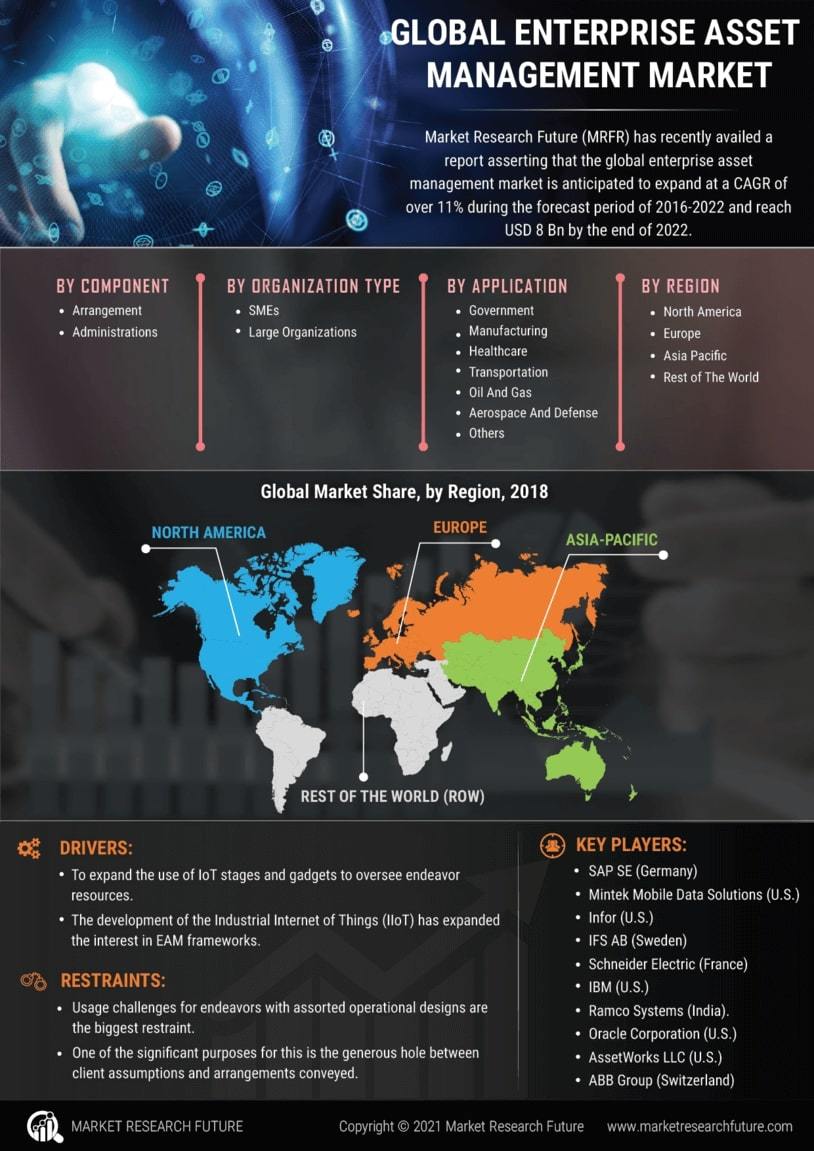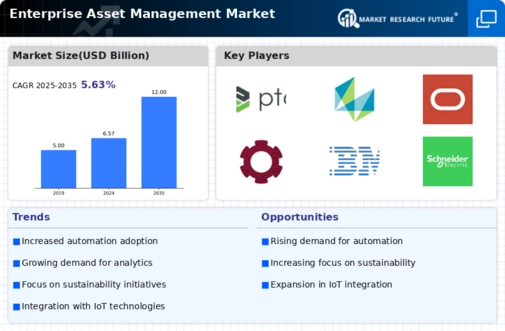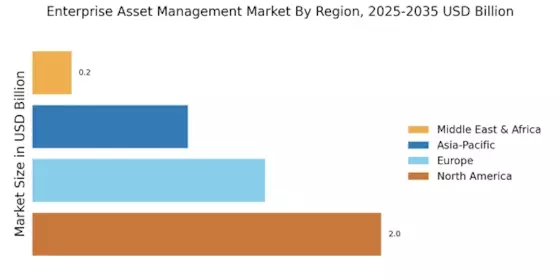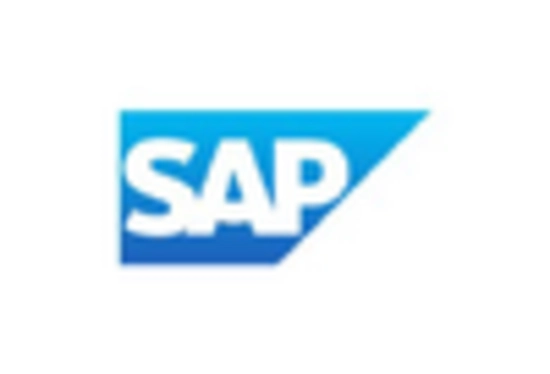Integration of Cloud-Based Solutions
The shift towards cloud-based solutions is a prominent trend within the Enterprise Asset Management Market. Organizations are increasingly adopting cloud technologies to enhance accessibility, scalability, and collaboration in asset management processes. Cloud-based EAM solutions offer real-time data access, enabling organizations to monitor asset performance from anywhere, thus facilitating informed decision-making. The market for cloud-based EAM solutions is projected to grow substantially, with estimates indicating a potential increase of over 25% in the next few years. This trend is driven by the need for organizations to streamline operations and reduce IT infrastructure costs. The integration of cloud technologies is likely to be a key factor in the continued evolution of the Enterprise Asset Management Market.
Adoption of Advanced Analytics and AI
The integration of advanced analytics and artificial intelligence within the Enterprise Asset Management Market is transforming how organizations manage their assets. By utilizing data-driven insights, companies can make informed decisions regarding asset performance and maintenance schedules. The market for AI in asset management is projected to grow significantly, with estimates suggesting a compound annual growth rate of over 20% in the coming years. This adoption allows for predictive analytics, which can forecast potential asset failures before they occur, thus reducing unplanned downtime. Furthermore, organizations are increasingly leveraging these technologies to enhance decision-making processes, optimize resource allocation, and improve overall asset management strategies. The rise of AI and analytics is expected to be a key driver in the evolution of the Enterprise Asset Management Market.
Regulatory Compliance and Risk Management
The necessity for regulatory compliance and effective risk management is becoming increasingly critical within the Enterprise Asset Management Market. Organizations are required to adhere to various regulations concerning asset safety, environmental impact, and operational standards. Failure to comply can result in substantial penalties and reputational damage. As a result, businesses are investing in EAM solutions that not only streamline compliance processes but also enhance risk management capabilities. The market is witnessing a shift towards solutions that provide comprehensive reporting and audit trails, ensuring that organizations can demonstrate compliance with regulatory requirements. This focus on compliance and risk management is likely to drive growth in the Enterprise Asset Management Market, as firms seek to mitigate risks associated with asset management.
Increased Demand for Operational Efficiency
The Enterprise Asset Management Market is experiencing a notable surge in demand for operational efficiency. Organizations are increasingly recognizing the necessity of optimizing asset utilization to reduce costs and enhance productivity. According to recent data, companies that implement effective asset management strategies can achieve up to a 30% reduction in operational costs. This trend is driven by the need for businesses to remain competitive in a rapidly evolving market landscape. As a result, organizations are investing in advanced EAM solutions that facilitate real-time monitoring and predictive maintenance, thereby minimizing downtime and extending asset lifespan. The focus on operational efficiency is likely to propel the growth of the Enterprise Asset Management Market, as firms seek to leverage technology to streamline processes and improve overall performance.
Growing Importance of Sustainability Initiatives
Sustainability initiatives are increasingly influencing the Enterprise Asset Management Market as organizations strive to reduce their environmental footprint. Companies are recognizing the importance of sustainable asset management practices, which not only contribute to environmental conservation but also enhance brand reputation. The market is seeing a rise in demand for EAM solutions that facilitate sustainable practices, such as energy-efficient asset utilization and waste reduction strategies. According to industry reports, organizations that adopt sustainable asset management practices can achieve significant cost savings while improving operational efficiency. This growing emphasis on sustainability is likely to be a driving force in the Enterprise Asset Management Market, as businesses align their strategies with global sustainability goals.


















Leave a Comment